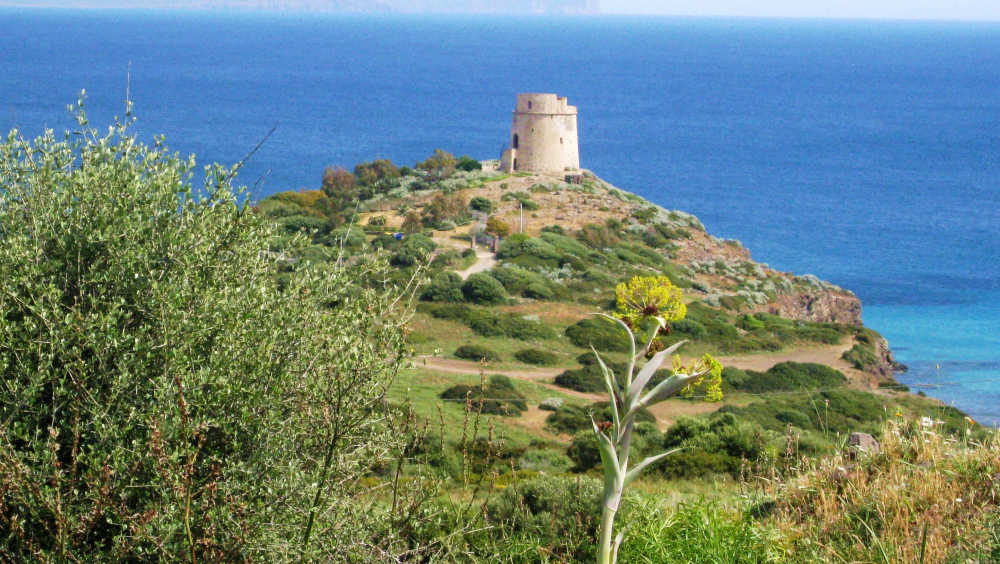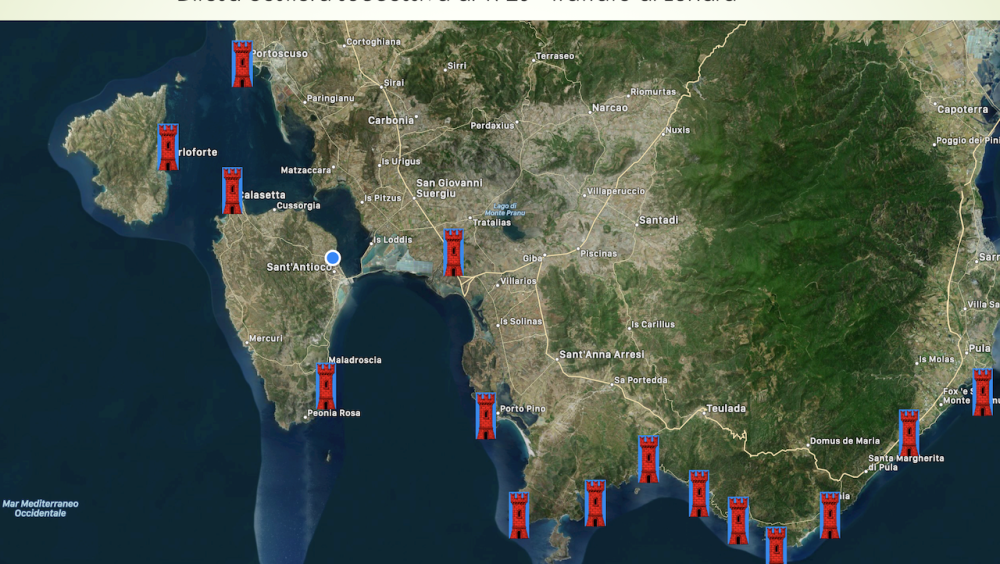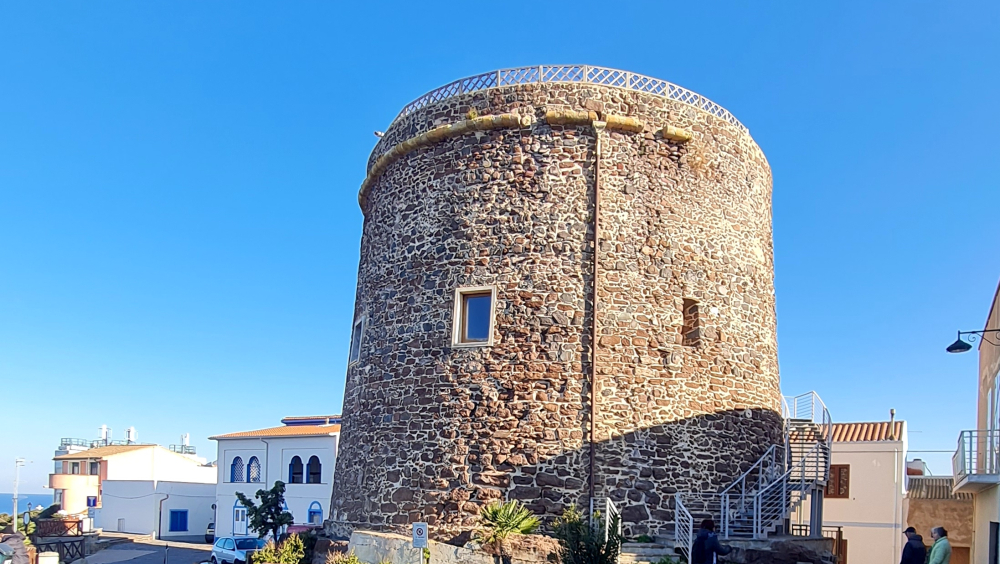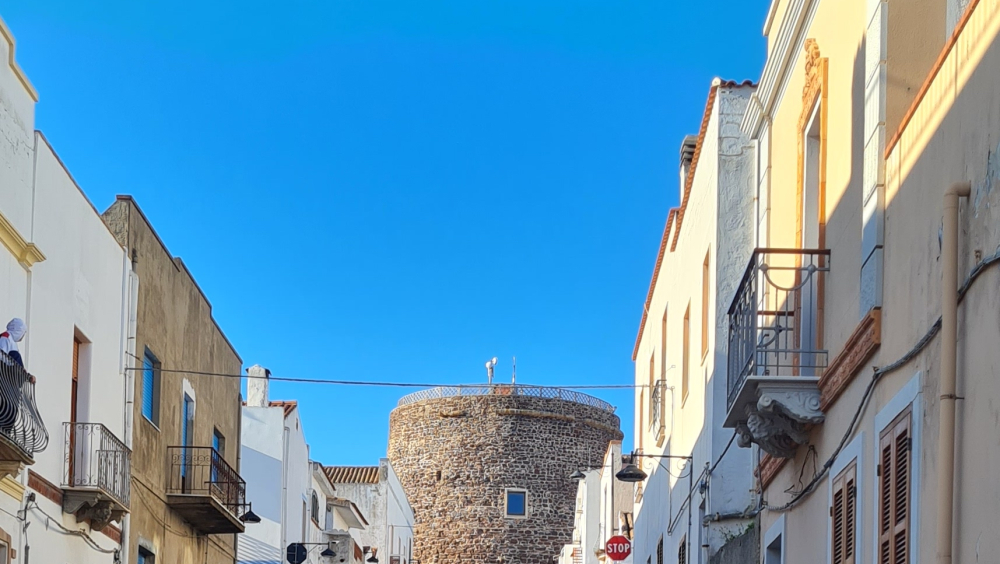THE COASTAL TOWERS OF THE SULCIS ARCHIPELAGO: AN EXAMPLE TO BE FOLLOWED
HOW IT ALL BEGAN
Around the eighth century AD, Sardinia became the target for the first "barbarian" raids, coming from North Africa. These raids forced the inhabitants to set up defence structures along the coasts of the island. Even before the Spanish domination of the island (in 1479), around sixty towers already watched over the Sardinian coasts.
In 1587, King Philip II of Spain founded the "Royal Administration of the Towers", whose task it was to build new towers, provide for their management, enrol soldiers and supply them with weapons.
The defensive system of the Sulcis archipelago (the islands of Sant'Antioco and San Pietro in south west Sardinia) belongs to the Piedmontese period. The towers of Calasetta, Sant'Antioco and Carloforte were built a few centuries after those already existing along the coasts of Sardinia.
This report concerns the three towers built in the Sulcis archipelago during the second half of the 18th century, their role as guards to watch for the arrival of enemy ships and to alert and defend the local population, and their new role as cultural centers.
By Graziano Bullegas, Antonello Meli e Lars Nordlinder
HISTORY
After the Treaty of London in 1720, when Sardinia came under the reign of the Savoys, it was decided to provide the Sulcis islands with the necessary coastal defenses, also foreseeing the future populations of the island of San Pietro and the northern part of the island of Sant'Antioco, until then uninhabited.
The Calasetta tower was built in 1756. The following year the Canai tower on the south-eastern coast of the island of Sant'Antioco was erected, and in 1768 the San Vittorio tower on the island of San Pietro.
Besides the task of defending the coasts from attacks by "barbarians", the towers were used to prevent smuggling and also to protect public health by preventing suspicious or infected ships from entering the ports.
Despite the presence of the towers, in 1793 part of the archipelago (the island of San Pietro and the northern part of Sant'Antioco) was occupied by French troops which, however, were favorably received by the inhabitants of Carloforte and Calasetta.
These defense systems against barbarian raids were not very successful. In 1798 a flotilla organized by the bey of Tunis landed on the island of San Pietro. With cunning strategies they managed to bypass the lookout of the San Vittorio tower, reach the town's fortifications, kill the soldiers of the garrison and take 800 people, especially women and children, as slaves.
A few decades later, in the raid of 1815, the inhabitants of Sant'Antioco met the same fate.
Luckily that was one of the last incursions that the coasts of Sardinia suffered.
In 1867, King Vittorio Emanuele II abolished the military use of the strongholds and coastal towers of Sardinia, handing them over to the Property of the State.
Many of Sardinia's coastal defense structures have now disappeared, others have become ruins, others still have been "privatized".
THE TOWERS TODAY
As early as 1898, the tower of San Vittorio was converted into an astronomical observatory. It is now one of the five international stations for the study of the precession of the equinoxes and of the small variations in the inclination of the earth's axis. Since 2016 the tower is a multimedia museum, created in collaboration with the Mu.Ma, the Institution Museums of the Sea and Migrations in Genoa. The museum tells the story of the island, from its geological origins up to the arrival of the Ligurian settlers in 1738.
In 1875, the Calasetta Tower was purchased by the Municipality of Calasetta. From the mid-60s, for about 15 years, it was used as a restaurant. From the beginning of the 1980s the ground floor of the tower (former cistern) contains an archaeological museum, managed by the foundation of the Museum of Contemporary Art. The upper floor offers temporary exhibitions and cultural activities.
In 1960 the Canai Tower in Sant'Antioco was granted to a private person who used it as a summer residence. Since 1989 it is managed by the Italia Nostra association. After an extensive restoration it is used for cultural purposes. The tower and the surrounding area are open to visitors. There are about 3,000 visitors a year. A permanent exhibition of the coastal towers of Sardinia and of the cultural and environmental heritage of the island of Sant'Antioco has been set up inside the tower. It is now an ideal place for cultural events organized by Italia Nostra and other non-profit associations.
AN EXAMPLE TO BE FOLLOWED
These defense and watchtowers exist along all the coasts of the Mediterranean at regular distances. They are united by a line of visual communication that streches along the entire coasts of the Mediterranean Sea.
This is a line that does not consider the boundaries of states or continents. It extends, with different types of constructions and different architectural patterns, along the Atlantic coast up to the Baltic Sea, crosses the Bosphorus and reaches the Black Sea.
The Italia Nostra project began in 1989 with the recovery of the Canai tower in Sant'Antioco. After a careful restoration the tower was transformed into an exhibition space and a center for cultural initiatives.
Similar activities are carried out in the other two towers of the archipelago. They are being used as centres for various cultural initiatives which combine tourism with the history, the culture and the characteristics of the area.
The towers of the Sulcis archipelago are an excellent example of a careful restoration and an intelligent reuse of a public property.
The three towers, once built to defend the islands, have assumed the role of custodians of history. Architectural structures that for several centuries have been characteristic features for the places that host them. Now they have become a source of inspiration to learn about the past.
Thanks to the commitment of Municipalities and Non-governmental Organizations (NGOs) they now represent a relationship between local resources and public use.
The above facts represent an example of what could be done in other parts of Europe. A chain of cultural communications could be formed using towers and defense structures. Cultural activities could be made into a supranational circuit, which could extend and involve other coastal realities in the Mediterranean and in all European seas.




